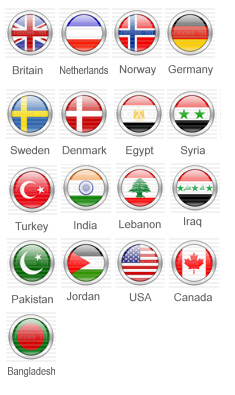International Resource Centre
Today
HBV in the contemporary world
According to statistics collected by UNPFA in 2000, there are 5,000 ‘honour’ killings per year stating that honour killings had been reported in Egypt, Jordan, Lebanon, Morocco, Pakistan, the Syrian Arab Republic, Turkey, Yemen, and other Mediterranean and Persian Gulf countries, and also in western countries such as France, Germany and the United Kingdom, largely within migrant communities; India also has high levels of ‘honour’ based crimes, on a level with the prevalence in Pakistan. However, this figure is considered an underestimate by many women’s rights activists and the true prevalence of HBV at the current time is unknown and very difficult to estimate. Murders committed in the name of honour may be concealed through the combined power of family and community working in concert, providing alibis for one another and representing a murder as an accidental death or suicide. In certain countries, women and girls may not be registered at birth or attend school, so their lives, and their deaths occur outside official figures. In some cases, police and the judiciary may collude by interpreting a murder as a natural death: in one case for example, a woman murdered by her family was recorded as dying of ‘old age’ despite being under 25.
The media may not report upon ‘honour’ killings: our knowledge of honour crimes in Jordan, for instance, stems from the activism of journalist Rana Husseini, who decided to cover such events as crimes, rather than following the procedure of her colleagues who disregarded them as family matters. Thus we may have a stronger awareness of crimes of honour where there is an independent press which has identified honour violence as an issue of concern, such as in South Asia, than others where the crime is misrecognised or treated as a minor issue, and where the state exerts control over the media.
HBV is not uniformly distributed with certain provinces displaying different levels within a country. In Pakistan, for example, the levels of honour-based violence are higher in Punjab and Sindh provinces, whereas in India, Haryana is particularly prone. In other cases, HBV is associated with a particular minority. Responses vary from country to country, where in some cases crimes considered to have been justified by honour are considered lesser crimes, with lower sentences being specified in the penal codes of Syria, Iraq and Jordan amongst others. In Iran, the killing of a child by her or his father or paternal grandfather is not considered a criminal matter. Informal courts in South Asia and the Middle East may encourage honour killings and related crimes against women such as compensation marriages. In the Middle East and South Asia, while some provision for protection exists through the efforts of NGOs and the state, this can be unreliable and inadequate. In certain countries, women deemed at risk of ‘honour’ killing may be imprisoned ‘for their protection’ and may end up serving life sentences for no criminal act of their own, but for the crimes threatened against them. In some cases, there are attempts to mediate between the family and the individual at risk; however these can be unsafe and families may conceal their intentions to carry out a murder.
Within Europe and the English-speaking world, HBV has been placed on the agenda through the publicity surrounding particular murders. The killing of Fadime Sahindal in Sweden put the issue on the European agenda, leading to the first European conference on HBV. Since then, various NGOs have campaigned for policies and practise to provide support to potential victims of forced marriage and HBV. However there is little in the way of statistics to demonstrate the prevalence even in countries with the most developed responses to HBV, and state provision of appropriate services, and awareness of the issues is patchy at best, and in some cases inflected by a cultural relativism that fails to treat violence against women in minority communities with the same rigour as abuses within the majority population.

